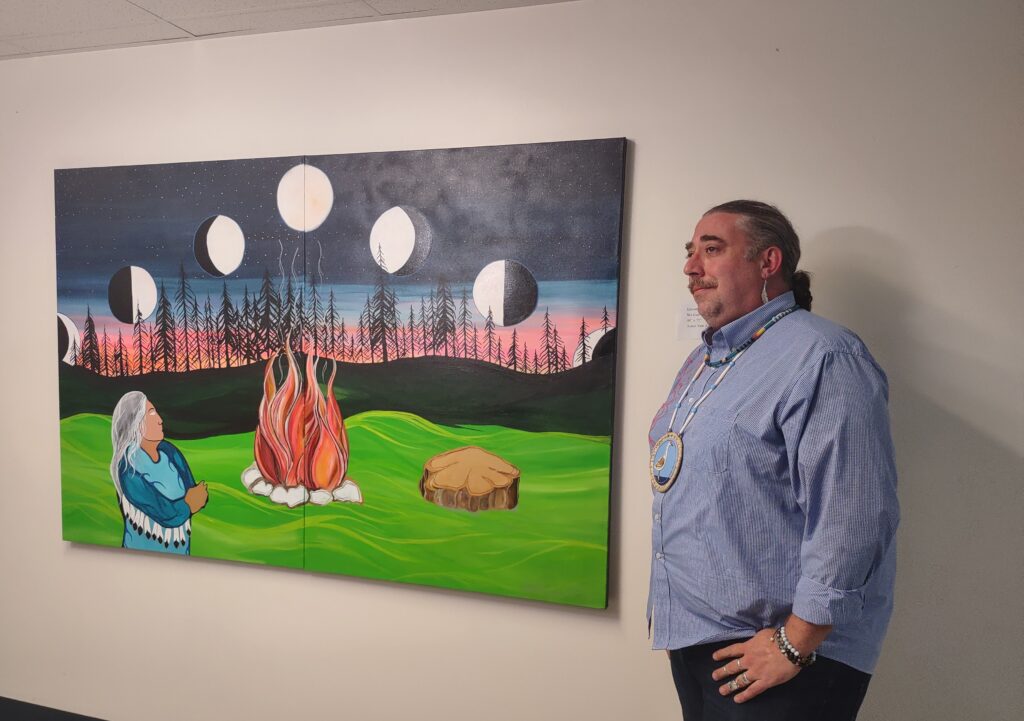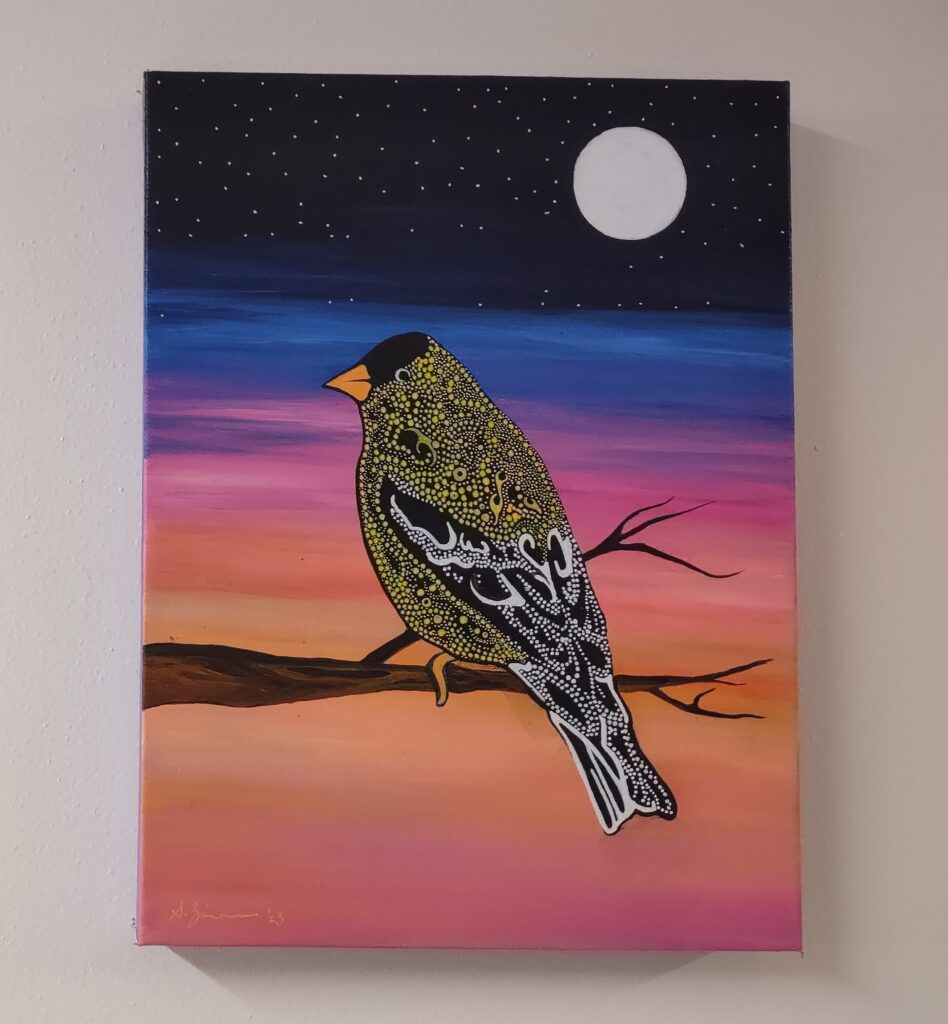
Students and staff gathered inside Merrill Hall Thursday evening for an emotional reveal of the first mural in an artist-in-residence series at University of Wisconsin-Milwaukee’s Indigenous-focused centers.
The American Indian Student Center and Electa Quinney Institute invited Duluth-based painter Sam Zimmerman-Zhaawanoogiizhik for the first residency. During April he held artist conversations and workshops with student interns to prepare a mural design that visualizes Indigenous sovereignty on campus.
“There are 53 pine trees anchoring the background of this composition to represent every year that this center has been open” Zimmerman said. “For the passing of time, the phases of the moon travel to represent everyone’s journey here on campus and as they go foreword.”
The American Indian Student Center offers student-centered support for connecting students to financial aid, campus resources and social programming. Zimmerman wanted to incorporate native symbolism into every aspect of the two-paneled mural titled We Gather to Share: an elder with 11 eagle feathers indicates strength and bravery, and 365 stars represent the days of the year.
The university is built on land where five tribes once lived, and Milwaukee has the largest population of Native Americans east of the Mississippi. The indigenous centers at UWM strive to remember that indigenous presence through art, as well as a program teaching four indigenous languages.
To honor the efforts of passing on a language, Zimmerman revealed a smaller companion painting to the mural, titled Dawn Goldfinch.

“It’s amazing to have wall spaces like this to create sovereign spaces for students where they can see themselves, and see this place as theirs,” said Dr. Sharity Bassett, manager of the American Indian Student Center.
Zimmerman designed the mural to connect with a gathering place installed outside Merrill Hall last fall. 16 granite stones with carvings on a central stone depicting Lake Michigan comprise a fire circle. It provides a place of celebration for Native American students, installed at the same time that the American Indian Student Center moved into the hall where the Electa Quinney Institute coordinates educational opportunities and research within American Indian Studies.
In the center of the mural, an empty seat is beside a fire: “A lot of the conversations and themes I heard were about finding our place on campus,” said Zimmerman. “I want people who see this piece to realize that that’s your seat.”










